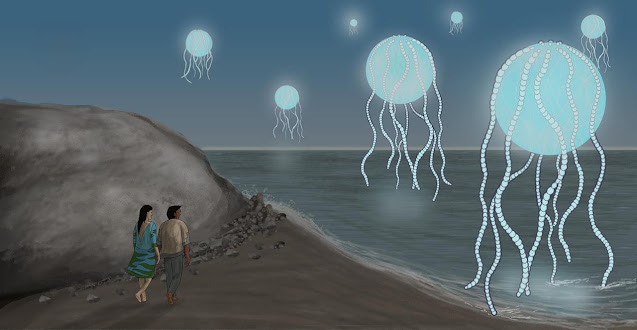From Atoms to Animals (Part 2) - Building The Building Blocks
Abiogenesis is the name for the scientific hypothesis that describes how this could have occurred. As you will see, our initial question has no simple, straightforward answer. Rather, the one big question breaks down into many smaller questions regarding how each step of the process took place.
The first part is concerned with the existence of the basic chemical compounds of living organisms. We are made of atoms, but those atoms bond together to form complex molecules. Water, for example, is a compound of hydrogen and oxygen. A water molecule is an oxygen atom bound to two hydrogen atoms (H2O). Water is an essential ingredient for any living organism (it makes up 60% of your body), and it is a very simple compound that forms naturally from its two basic components. Electrical charges on the atoms bind them to each other, like magnets.
However, there are other types of compounds which are also vital for life. Carbohydrates and lipids (molecules consisting of carbon, hydrogen and oxygen) also form naturally. Two other types of molecules, however - amino acids and nucleotides – are much larger (scientists call them ‘macromolecules’); the structure of these are much, MUCH more complicated. Explaining their existence is more of a challenge.
In the past few decades we have made some interesting discoveries regarding these “prebiotic” chemicals. Amino acids have been detected in space, where the action of ultraviolet light from stars on interstellar dust seems to create them. They have also been found in meteorites. Nucleotides have also been found in samples from meteorites and comets. During the early days of Earth’s formation over four billion years ago meteor bombardment was very common, so this could easily have been the source of the macromolecules needed for the emergence of life.
It is also possible that amino acids could have formed on Earth. In 1952 the Miller-Urey experiment was an attempt to simulate conditions on Earth soon after it formed. A glass bottle containing water, methane, ammonia and hydrogen gas (representing the ‘primordial soup’ of chemicals) was heated to produce steam, which was allowed to pass into a larger flask in which electrical sparks were fired between two electrodes (to simulate lightning). The flasks were then cooled to allow the vapour to condense.
This process was repeated for a week, and then the residue was analysed. Five amino acids were identified. When the original apparatus was re-examined after 2007 with more sensitive equipment it was found to contain over 20 amino acids.
Similar experiments since then have produced similar results. In 1961, Joan Oró conducted an experiment in which the nucleotide base adenine (plus many amino acids) was produced from hydrogen cyanide (HCN) and ammonia in a water solution. From all of this evidence we can see that the building blocks of life can form naturally from pre-biotic chemicals with the addition of external energy: starlight, lightning, perhaps meteorite impacts, ambient radiation, volcanic activity and hydrothermal vents on the ocean floor.


Comments
Post a Comment